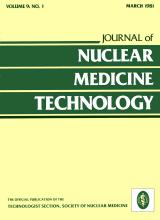Abstract
Thallium-201 myocardial images of 20 patients undergoing treadmill exercise were evaluated as to the ability of the high sensitivity collimator (HSC) to reveal perfusion defects compared to images obtained using the high resolution collimator (HRC). We acquired 200,000 count images in the anterior, 45° left anterior oblique, and left lateral projections. Average acquisition times were: HSC 3.41 min. and HRC 6.08 min. Fifteen patients who had clearly visible perfusion defects using the HRC showed degraded definition or appreciable loss of definition of the same defects when using the HSC.







